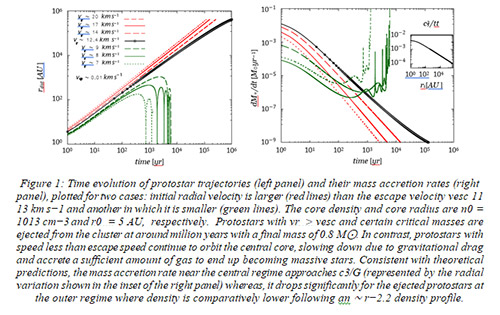 A new analytical model has thrown up possibilities that some of the ‘First stars’ formed between 100 million to 250 million years after the Big Bang, may have survived till the present epoch.
A new analytical model has thrown up possibilities that some of the ‘First stars’ formed between 100 million to 250 million years after the Big Bang, may have survived till the present epoch.
Supercomputers and sophisticated numerical algorithms have allowed cosmologists to show how density fluctuations left over from the very early stages of the Universe after its creation in a Big Bang could have evolved into the ‘First stars’, but the ultimate fate of the stars have long remained elusive.
Led by Jayanta Dutta from Indian Institutes of Science Education and Research (IISER) Mohali, a team consisting of Sharanya Sur from Indian Institute of Astrophysics Bangalore, an autonomous institute of the Department of Science & Technology, Government of India, Athena Stacy from UC Berkeley and Jasjeet Singh Bagla from IISER Mohali have developed a model that allows to follow the evolution of these protostars up to a million years from their birth.
Exploring the survival possibility of these stars called Population III protostars till the present day, the team showed that some of these stars that initially formed within a certain range of masses and are ejected with velocity larger than the escape velocity may have survived to the present day on the main sequence, an evolutionary phase in stellar evolution where stars are converting hydrogen to helium in their cores via nuclear fusion. How long a star remains in this phase depends on its mass. In the present study, since the ejected protostars have masses less than 0.8 solar mass, they will take longer to evolve off the main sequence. Thus, they may even be found in our Milky Way or its satellites.
Their calculations also revealed that protostars that do not get ejected from the parent gas clump accumulate a large amount of gas. Thus, these can possibly become massive enough to be progenitors of black holes. The research supported by the Science and Engineering Research Board (SERB) of the Department of Science and Technology (DST), Government of India, and a National Post Doctoral Fellowship (NPDF) at the Physical Science department of IISER Mohali was published in ‘The Astrophysical Journal’ recently.
This work comes at a time when even the most sophisticated highest resolution cosmological simulations of primordial star formation are unable to follow the gas evolution beyond a few hundreds of years from the formation of the first central hydrostatic core, which is inadequate to ascertain the fate of the protostars.
Using a semi-analytical model, this team followed the long term evolution of the trajectory and mass accretion history of these protostars on time scales that are crucial to infer about the ultimate fate of these stars and predicted that some of them could enter the main sequence and survived till the present epoch. This work offers a fresh approach to explore the complex nature of the non-linear process of gravitational collapse and sheds new light on the eventual fate of the first sources of illumination in our Universe.
Publication Details :
J. Dutta, S. Sur, A. Stacy & J. S. Bagla, 2020, Astrophysical Journal, Vol. 906, 2020
For more details, Dr. Sharanya Sur (sharanya[dot]sur[at]iiap[dot]res[dot]in) can be contacted.






























